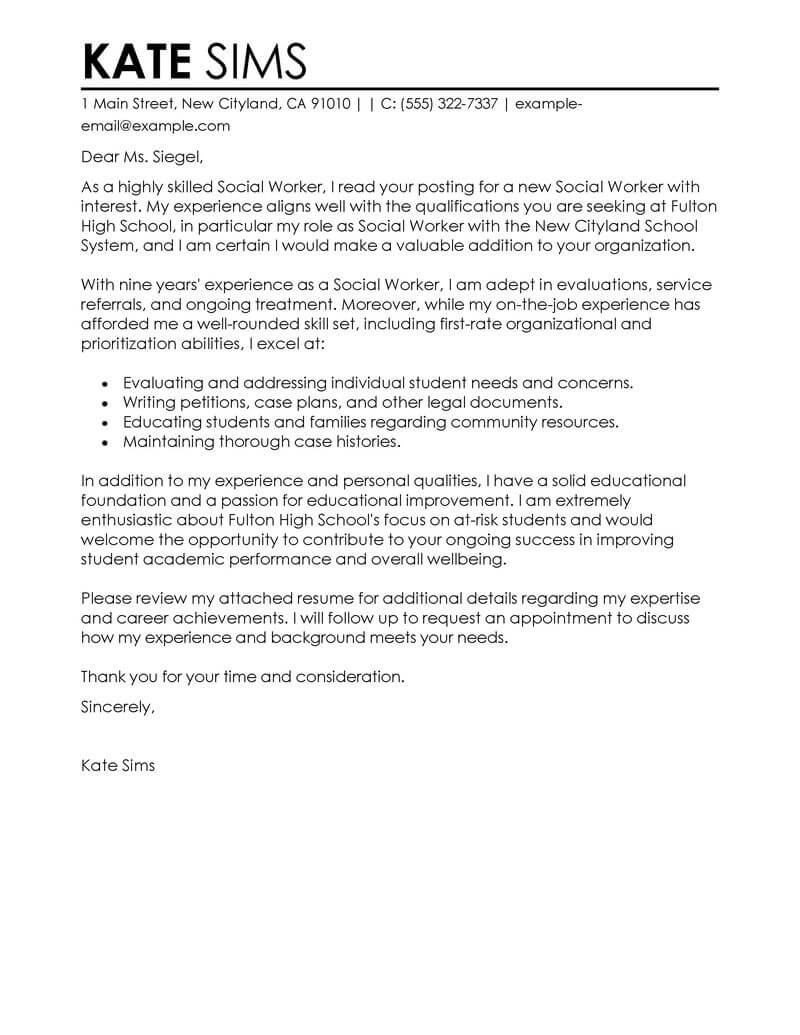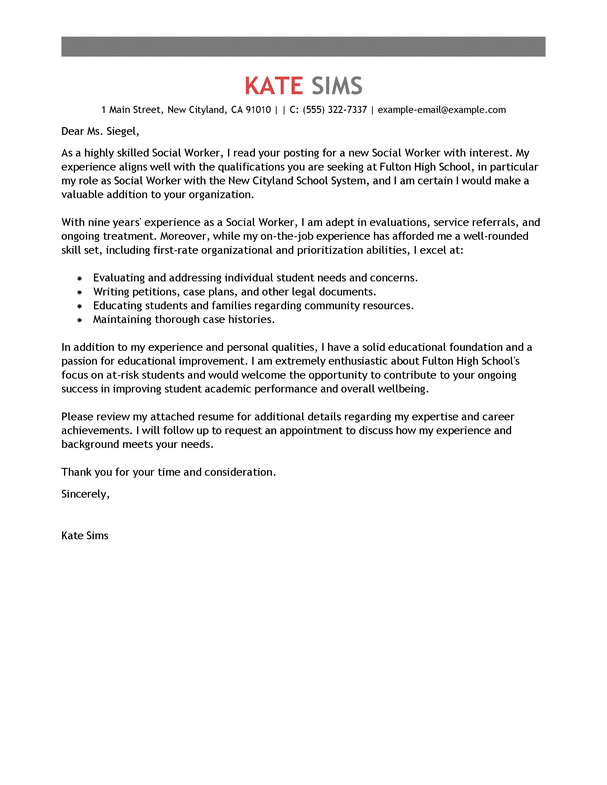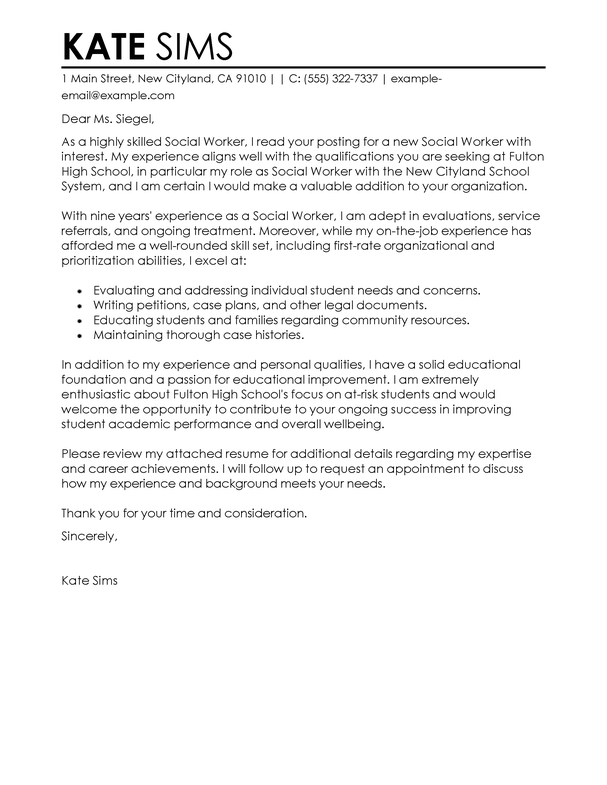Best Social Worker Cover Letter Examples
Published: Saturday 7th of April 2018; Words Count: 1750
An engaging cover letter is a great way to get an employer to read your resume. With the following tips and social worker cover letter example, you will have the tools to create a more polished cover letter yourself.
- Do use your cover letter to tell an engaging story. If social work has been your life’s ambition, use events in your past to explain your experience and passion for this kind of work.
- Do not focus on what you expect to get out of working for a company. Hiring managers care more about what you can do for them, not the other way around.
- Do highlight rare experiences that have made you a great employee. One way to do this is to mention people you have met in your time as a social worker who have had an impact on you.
- Do not forget to look over an employer’s website before sending in your resume. This gives you a chance to understand the company’s voice so you can mimic that in your cover letter.
Social Worker Advice
Want to make a major difference in the lives of people in need? Consider a career as a social worker. Social workers work with a variety of people every day help to help improve lives and solve problems. Being a social worker is as much a calling as a job, but you’ll still need an outstanding cover letter. The cover letter examples below can help put you on the path to the meaningful career you want. Use these cover letter examples as a guide to writing and formatting, and create your own cover letter with confidence!

Cover Letter Tips for Social Worker
Finding jobs as a Social Worker means keeping the right mindset and putting to use some effective job seeking skills. The tips below can help keep you on track during the job hunt.
1. Stay positive. Having a positive mindset can help you keep things in perspective and remember that your unemployment is only temporary. You might consider joining a support group and connecting with others in the same position.
2. Set goals for yourself. Setting goals that can be achieved on a weekly or daily basis will help maximize your productivity. For example, you might try sending out a certain number of cover letters per week.
3. Keep an open mind. Although you may have had your sights set on a particular field or industry, keeping an open mind will allow more opportunities to come your way.
4. Connect with your network. Reach out to personal and professional contacts who could offer insight into the job market. This advice will be useful and you never know where your next lead could come from.
5. Make a presence on social media. Make use of websites such as Facebook, Twitter, and LinkedIn to help expand your network.

Social Worker Job Seeking Tips
When it comes to finding jobs as a Social Worker, remember that your cover letter will work as your calling card. Keep your cover letter in top shape by following the tips below.
1. Don’t exceed two pages. With the exception of academics and doctors who might use curricula vitae (CVs), there is no need to write over two pages.
2. Do use bullet points for listing items and align the text flush left. These formatting standards will immensely improve the organization of your writing.
3. Don’t rely on generic language. Avoid the overly used phrases such as Âteam player” and Âdetail oriented,” as they take away from the originality of your writing.
4. Do introduce your work history section with a ÂSummary of Skills” section. Doing so provides an overview of your professional qualifications.
5. Do list your work history section in the following suggested order: title of position, employer, city and state of employer, and employment dates.






